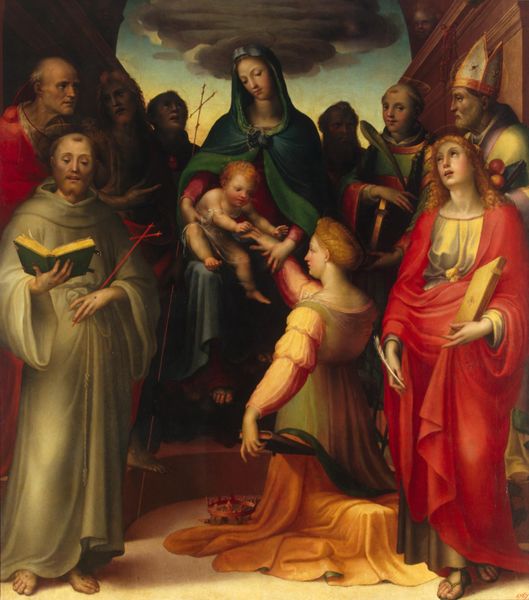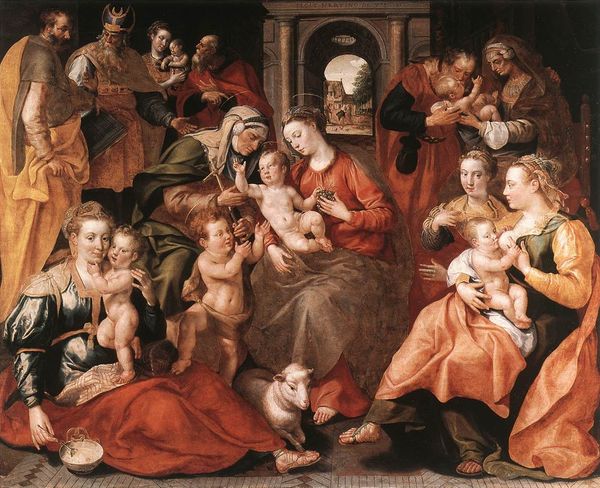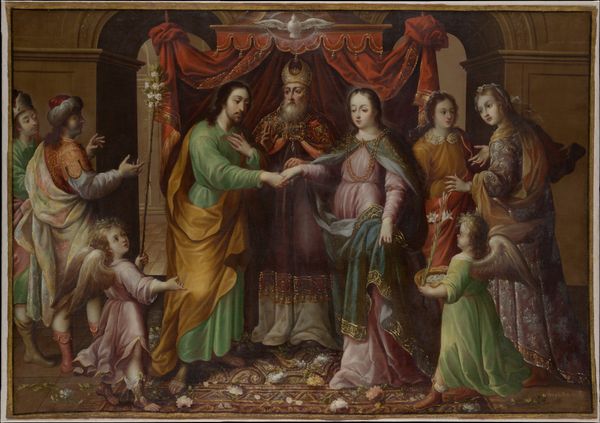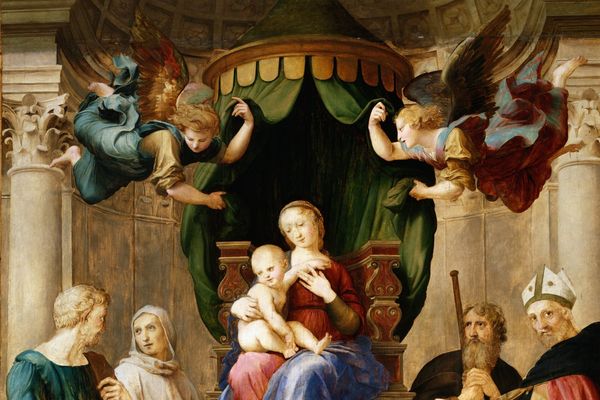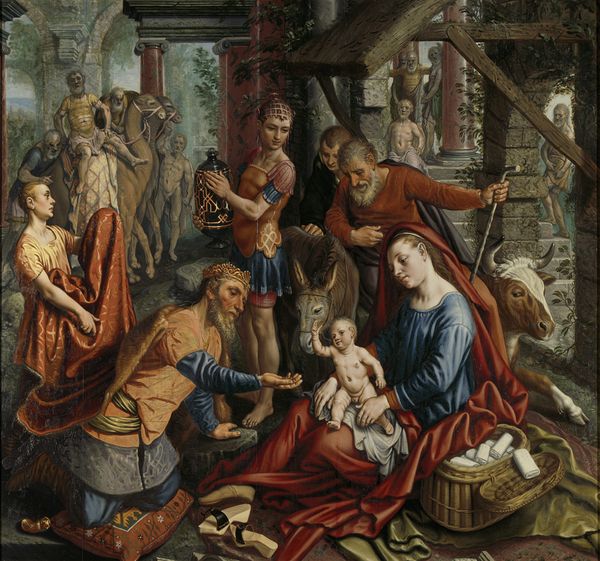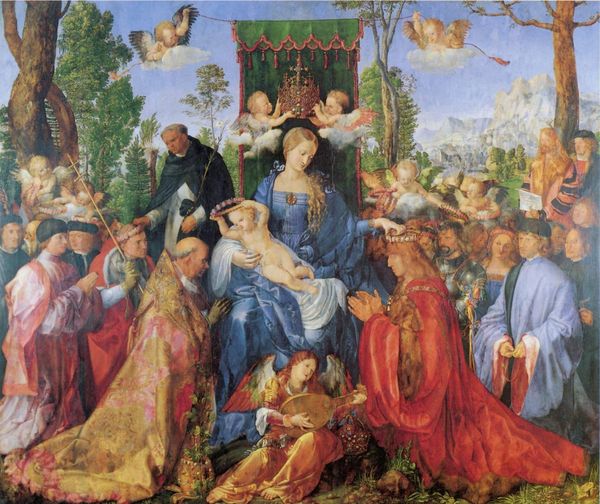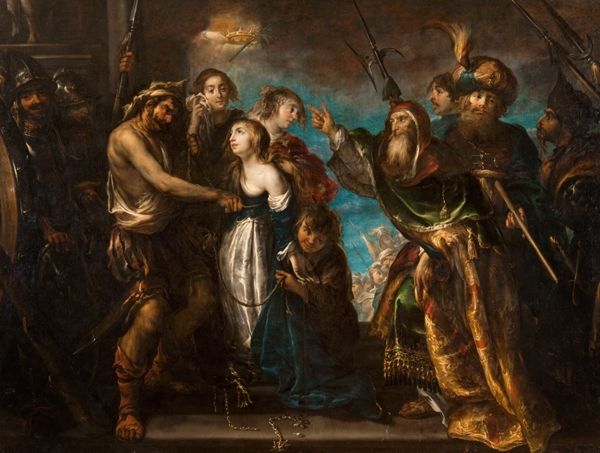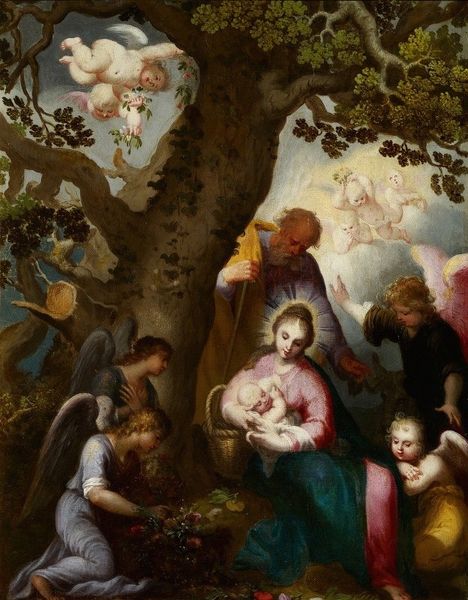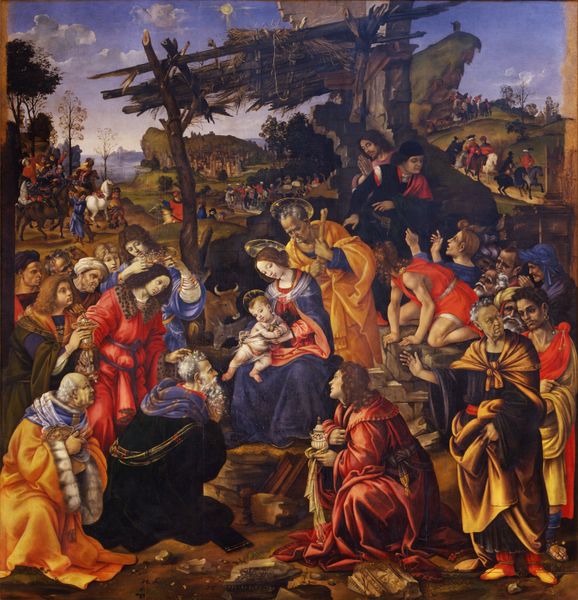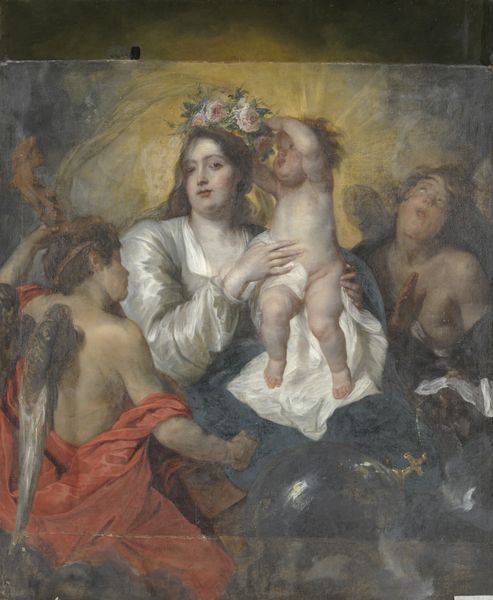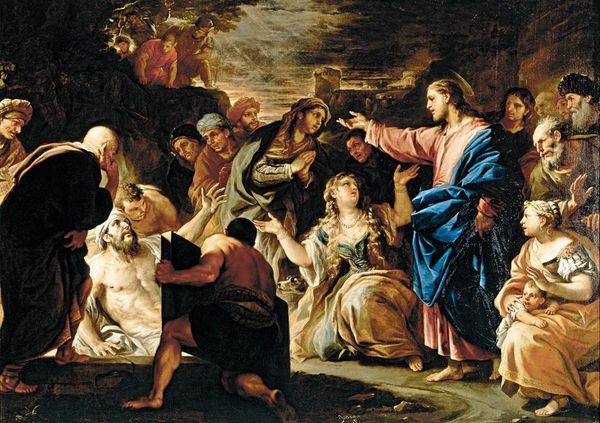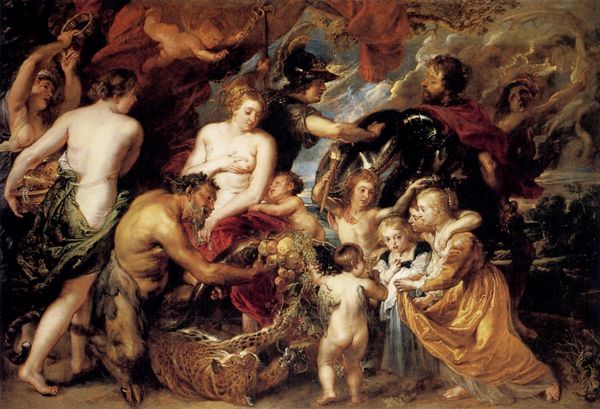
oil-paint
#
gouache
#
allegory
#
baroque
#
oil-paint
#
figuration
#
oil painting
#
mythology
#
history-painting
Copyright: Public domain
Curator: This captivating oil painting is titled "The Allegory of Public Welfare," and was crafted by Jan Brueghel the Elder. Editor: What strikes me first is the composition. The diverse figures assembled, the textiles draped about, it suggests wealth, perhaps even excess. But there is also something very stilted in their presentation. Curator: Indeed, Brueghel creates a very formal presentation here, befitting the genre of allegory. The painting’s crowded stage reflects a societal order and probably was intended as a political statement, meant to be both understood and appreciated by a select, educated audience. The symbolic language reflects contemporary ideals and concerns about civic responsibility. Editor: Looking closer, it seems the material possessions are indicators of global trade. Considering Brueghel's workshop practice and the consumption patterns of his patrons, were these artworks commissioned to underscore status and power? The use of oil paint and probably gouache as well allows for rich, saturated color which is typical for the time. Curator: Absolutely. Brueghel and his contemporaries often received commissions from wealthy merchants and ruling families who wanted to visually assert their control over expanding trade networks. The very act of commissioning such elaborate paintings played a role in establishing and maintaining their social standing, functioning as a status symbol. Editor: Also the drapery isn't only ornate; the inclusion of what appears to be possibly non-European people at the margins brings up the economic reality undergirding the society it depicts. I am curious about the provenance of some of those pigments, such as ultramarine, which came from across the sea. Curator: You highlight the problematic aspects of these depictions—the exoticizing of those on the edges, hinting at exploitation and power dynamics inherent in global trade, and perhaps providing a certain reassurance to Brueghel’s target audience, reassuring them of their dominance. Editor: Well, seeing it in that way gives me food for thought—about the history of the material itself, and how it reveals so much about economic structure. Curator: Yes, analyzing through the lens of history offers a stark counterpoint to the aesthetic appeal. Thanks, this dialogue has provided me with new angles through which to interpret the work.
Comments
No comments
Be the first to comment and join the conversation on the ultimate creative platform.

